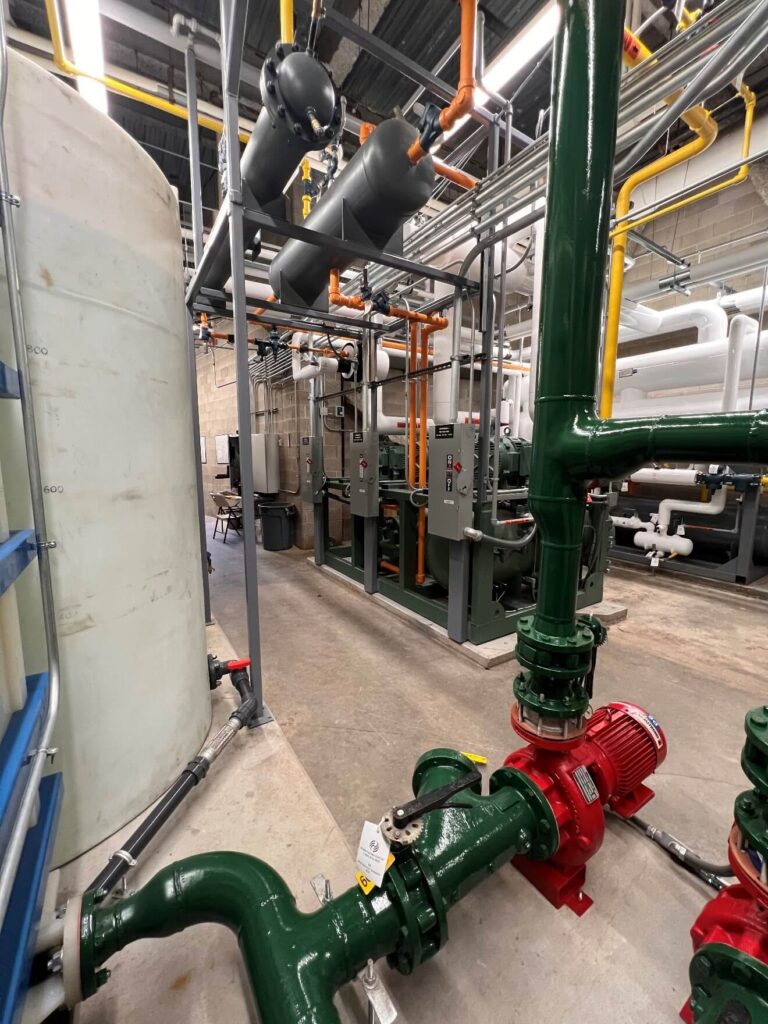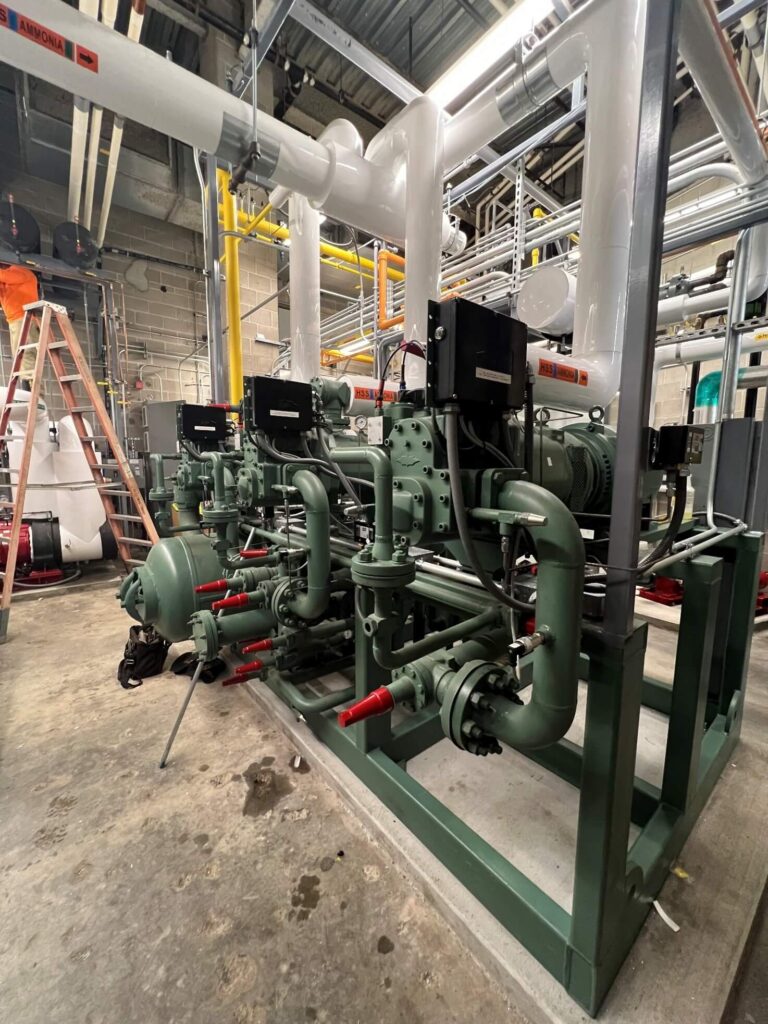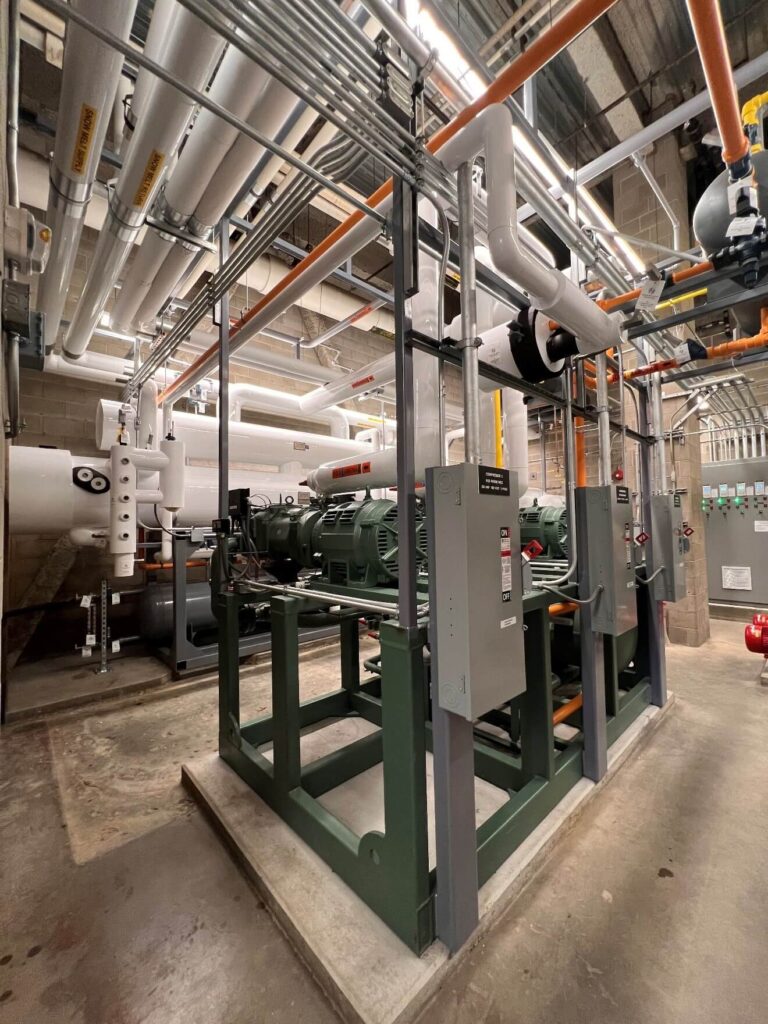UNH put out an RFP for a design build team to revamp the Whittemore Center Ice sheet and Refrigeration plant. Initially “The Whit” was installed with an Olympic sized floor at 100’ wide and 200 foot long. This width was causing players issue when competing on the now standard 85 foot width. The ammonia refrigeration plant had aged and was proving unreliable these past few years. It had reached an age where a significant overhaul and or replacement was needed.
Preferred joined the team of Engineers RFS, B32, Architects ARC and PC construction. After reviewing a proposed design build scope our team was awarded the project.
The largest hurdle was the narrowing of the width from 100 to an acceptable 90 foot wide. This reduction could not inhibit the fan experience. The hockey surface is completely enveloped by poured in place concrete stands that terminate at the rink surface. To keep it equidistant each side was reduced by 5 feet and the radiuses repoured at 28 feet. The existing headers were redesigned as end exposed to poured in floor blue line headers.
During construction it was discovered that the drainage for the water table had partially failed and was blocked using the emergency overflow. Whitin the old header trench a drainage system and pumps were added with emergency backup. These would add another level of drainage pumped up to the storm main. A new warm and cold floor was installed with HDPE tubing.
The snowmelt pit was raised to an above ground pit and a new fabricated stainless coil was installed. Unlike the previous system the snow melt worked flawlessly keeping up with demand.
An RO water system for the Zamboni was added along with 850 gallons of storage water to reduce the need for 140*F water making the system more efficient.
The ammonia plant was basically trapped in a concrete bunker with only 6 feet of corridor to the outside available. The design was a new Bitzer ACP ammonia plant with screw compressors. The skid was custom built so it could be rigged into the room on its side then placed on a housekeeping pad. The shell and tube flooded chiller vessel was built in place. The original condenser was in good condition at 7 years old and was incorporated into the design to save costs. The safety system converted the air dispersion reliefs to indoor water dispersion with the addition of a 1,000 gallon poly water tank. A complete digital control system was added with emergency shutdown and alarm. A significant amount of training was provided to the local fire department and what was once a brine system was now installed with glycol. Covid caused a year of delay but in 2022 the season opened on time with fast ice.






